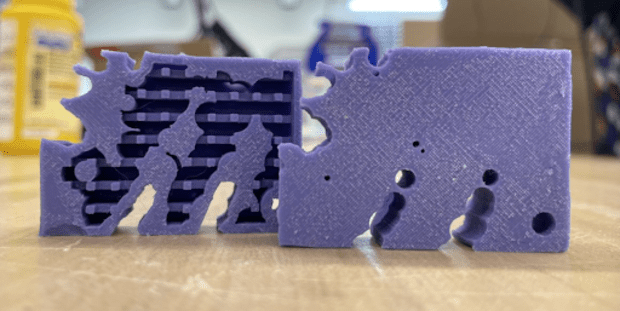TL;DR:
- Northwestern University researchers have achieved a significant milestone by utilizing AI to autonomously design a functional robot capable of walking on flat surfaces.
- Artificial intelligence continues to evolve, emulating human brain functions such as reasoning, learning, and intelligent decision-making.
- The AI-driven robot underwent a rapid learning process, gradually perfecting its ability to walk with each iteration.
- Lead researcher Sam Kriegman highlighted the AI’s innovative discovery of legged locomotion as the most efficient form of terrestrial movement.
- The robot’s unconventional design, featuring fins and holes, proved crucial for its mobility, though the reason behind these features remains a mystery.
- Sam Kriegman will provide further insights on this groundbreaking achievement during an upcoming appearance on CBS 2 News, with a comprehensive report available in the Proceedings of the National Academy of Sciences.
Main AI News:
In a remarkable breakthrough, Northwestern University’s researchers have achieved a significant milestone in artificial intelligence (AI) development. For the first time in history, they have harnessed the power of AI to autonomously design a functional robot. The outcome of this cutting-edge endeavor is a revolutionary creation—a robot capable of traversing flat surfaces, all meticulously crafted by the AI.
Artificial intelligence, the pinnacle of computer science, endeavors to replicate the intricate functions of the human brain, enabling machines to reason, learn, and act intelligently. The team at Northwestern University embarked on this remarkable journey by providing the AI with a simple directive: “Design a robot that can walk across a flat surface.” In mere seconds, the AI responded with a striking creation—a distinctive purple block, embodying the essence of autonomous design.
Remarkably, the AI’s learning curve demonstrated an astonishing pace, as it swiftly adapted to its newfound purpose. According to the university’s official statement, the AI’s journey to mobility began with a sequence of intriguing movements—jiggling, bouncing in place, and shuffling. After nine iterations, the purple block, born from the AI’s ingenuity, finally achieved a remarkable feat, exhibiting a gait that approximated half the speed of an average human stride.
Lead researcher Sam Kriegman expressed his fascination with the AI’s autonomous decisions, stating, “It’s interesting because we didn’t tell the AI that a robot should have legs. It rediscovered that legs are a good way to move around on land. Legged locomotion is, in fact, the most efficient form of terrestrial movement.”
The enigma surrounding the robot’s design, adorned with fins and holes, leaves the researchers intrigued. While the rationale behind these features remains elusive, they are deemed vital. Removing these enigmatic elements led to the robot’s loss of mobility, reinforcing their significance in the AI’s design.
For those eager to delve deeper into this groundbreaking achievement, Sam Kriegman will share further insights on October 4 during his appearance on CBS 2 News at 8 a.m. The comprehensive report can be found in the Proceedings of the National Academy of Sciences, offering a comprehensive exploration of this pioneering fusion of artificial intelligence and robotics.
Conclusion:
This pioneering development at Northwestern University underscores the potential of AI in revolutionizing the field of robotics. The AI’s ability to autonomously design a functional robot with efficient mobility represents a significant advancement. This breakthrough could have far-reaching implications for various industries, including manufacturing, automation, and robotics, as it demonstrates AI’s capacity to innovate and problem-solve independently. It signifies a promising future where AI-driven robots could play a more prominent role in addressing complex real-world challenges.

